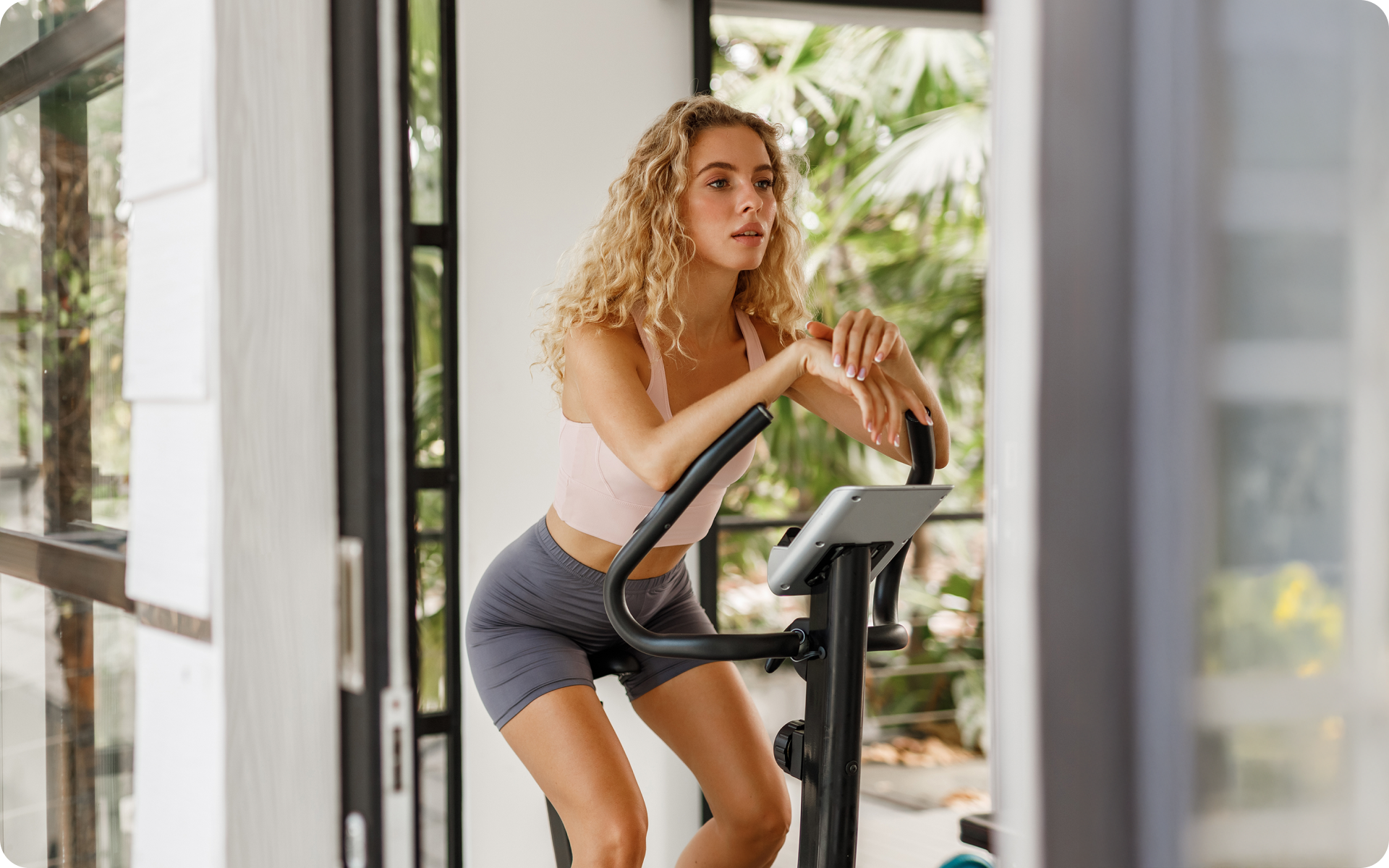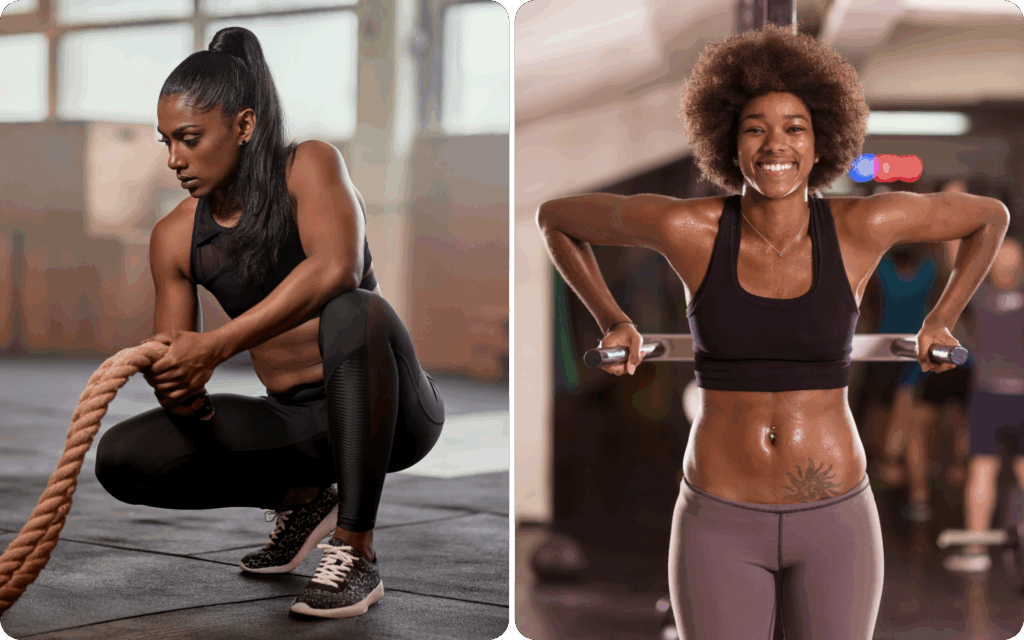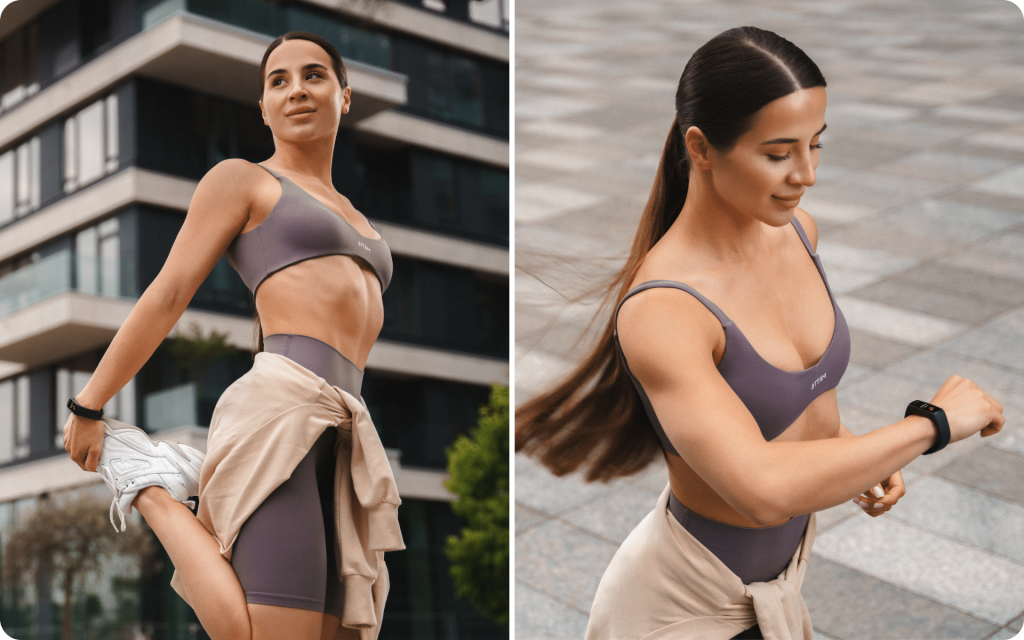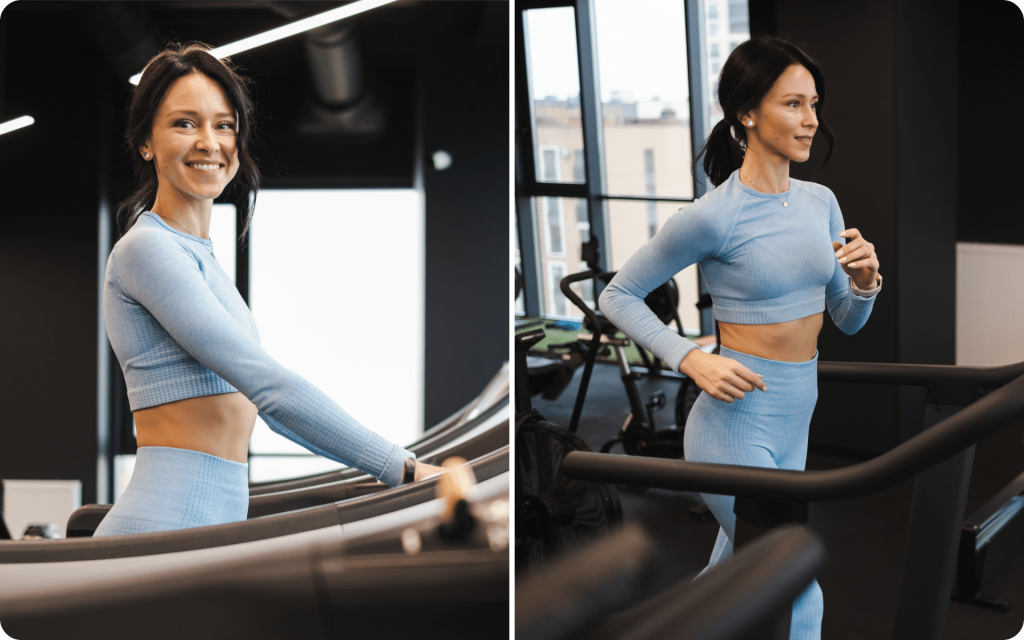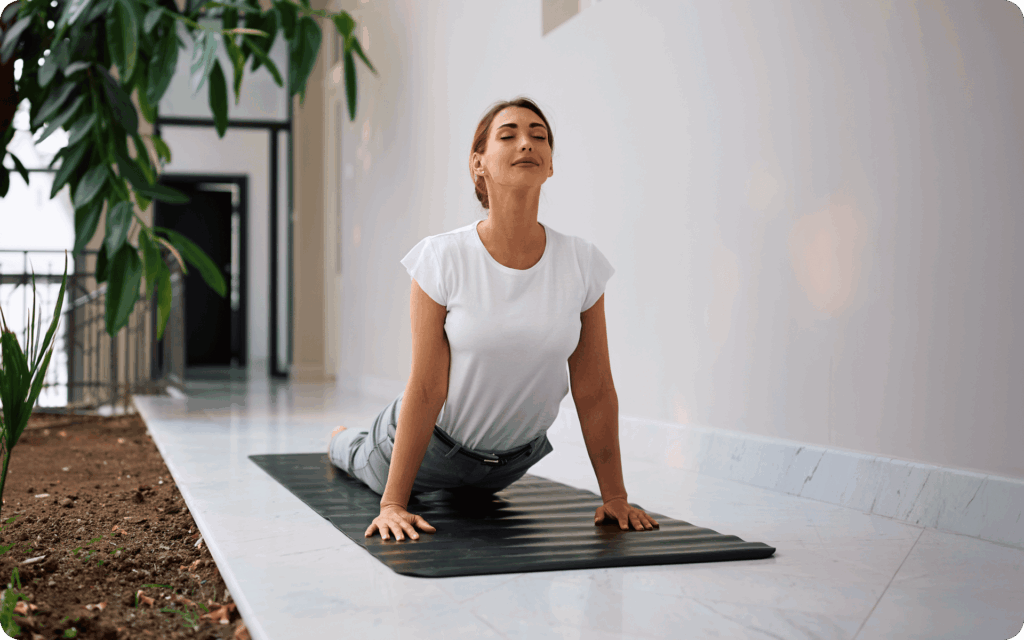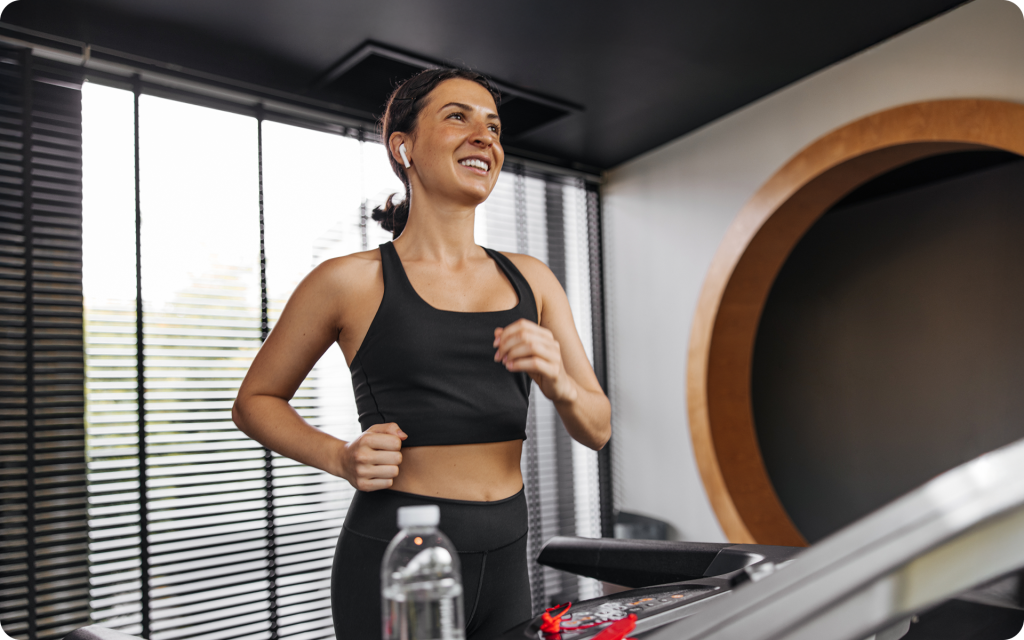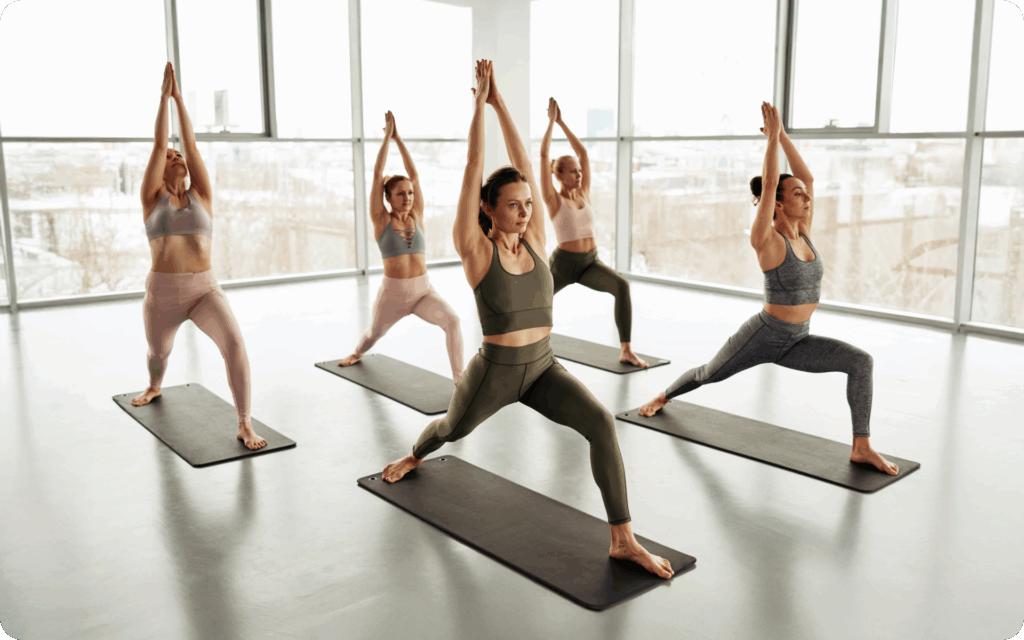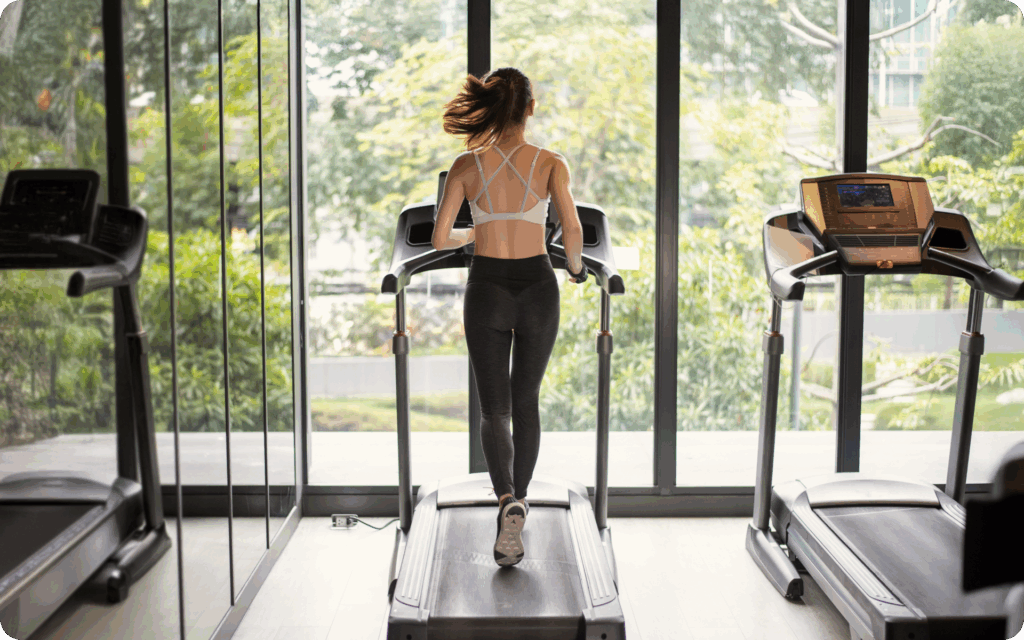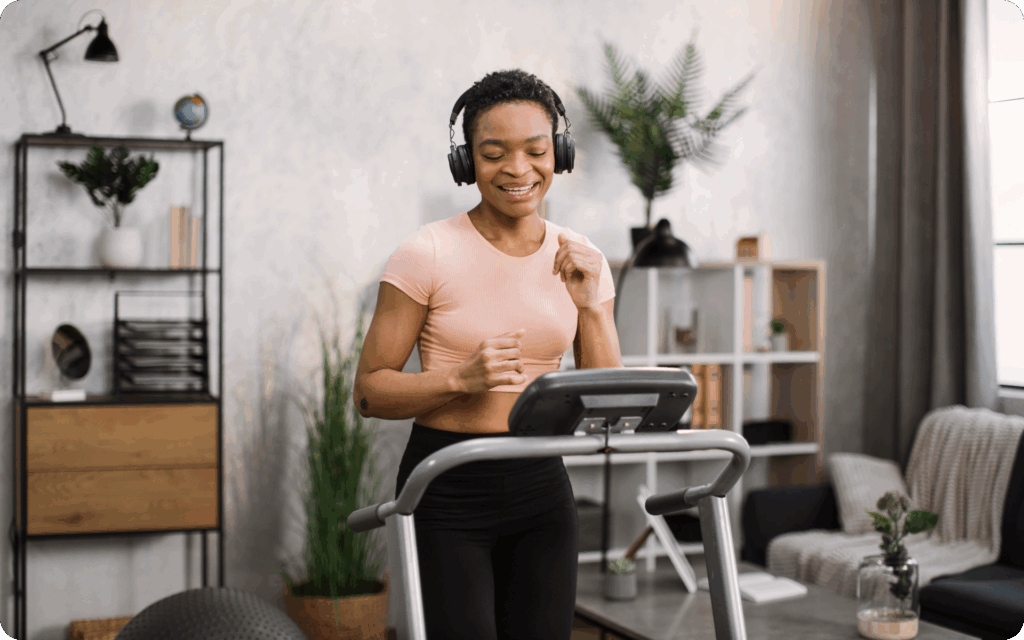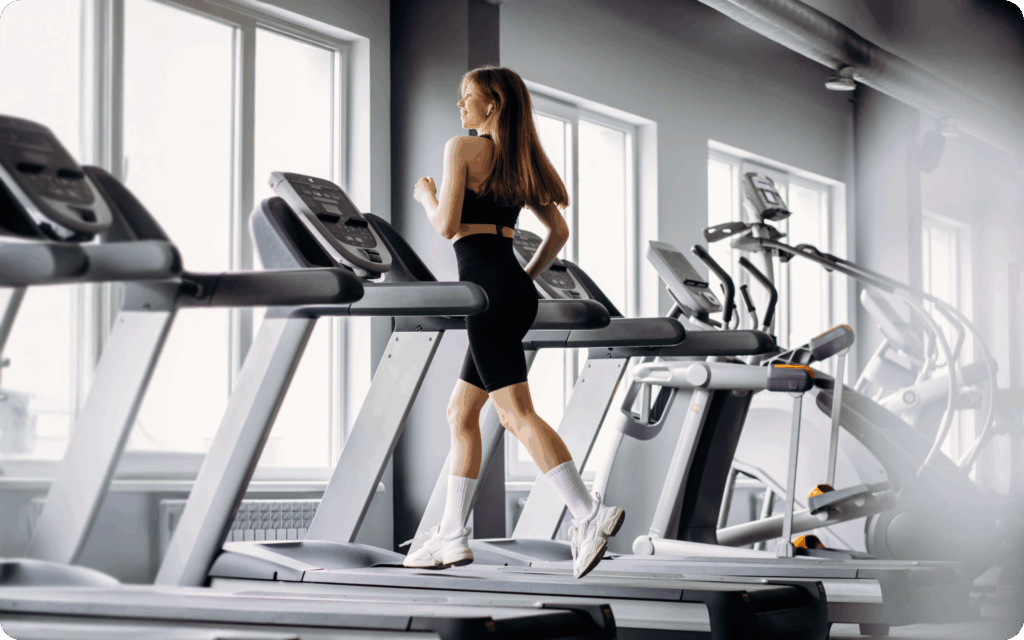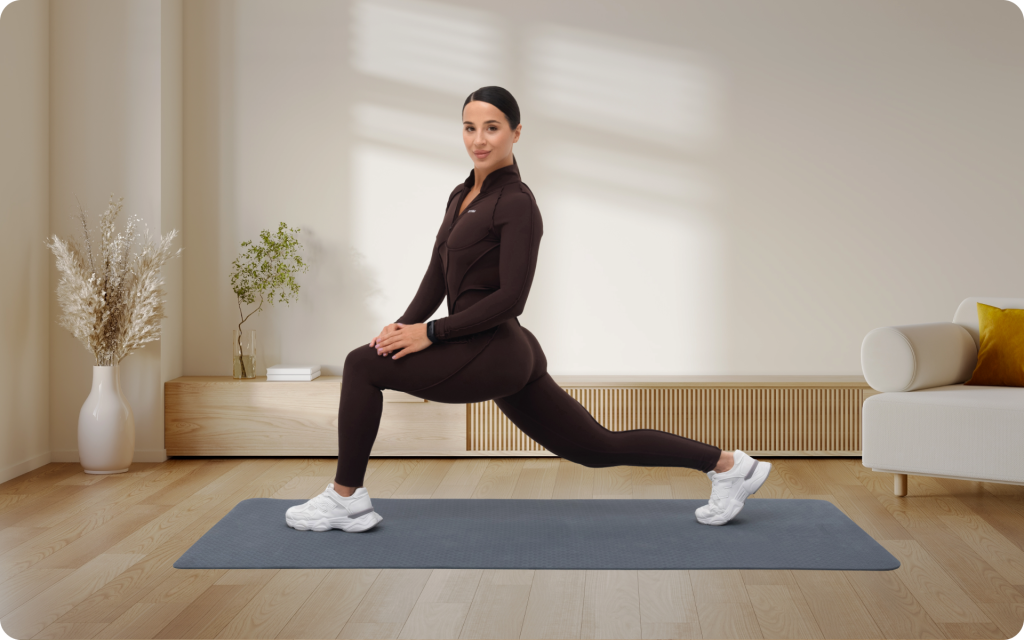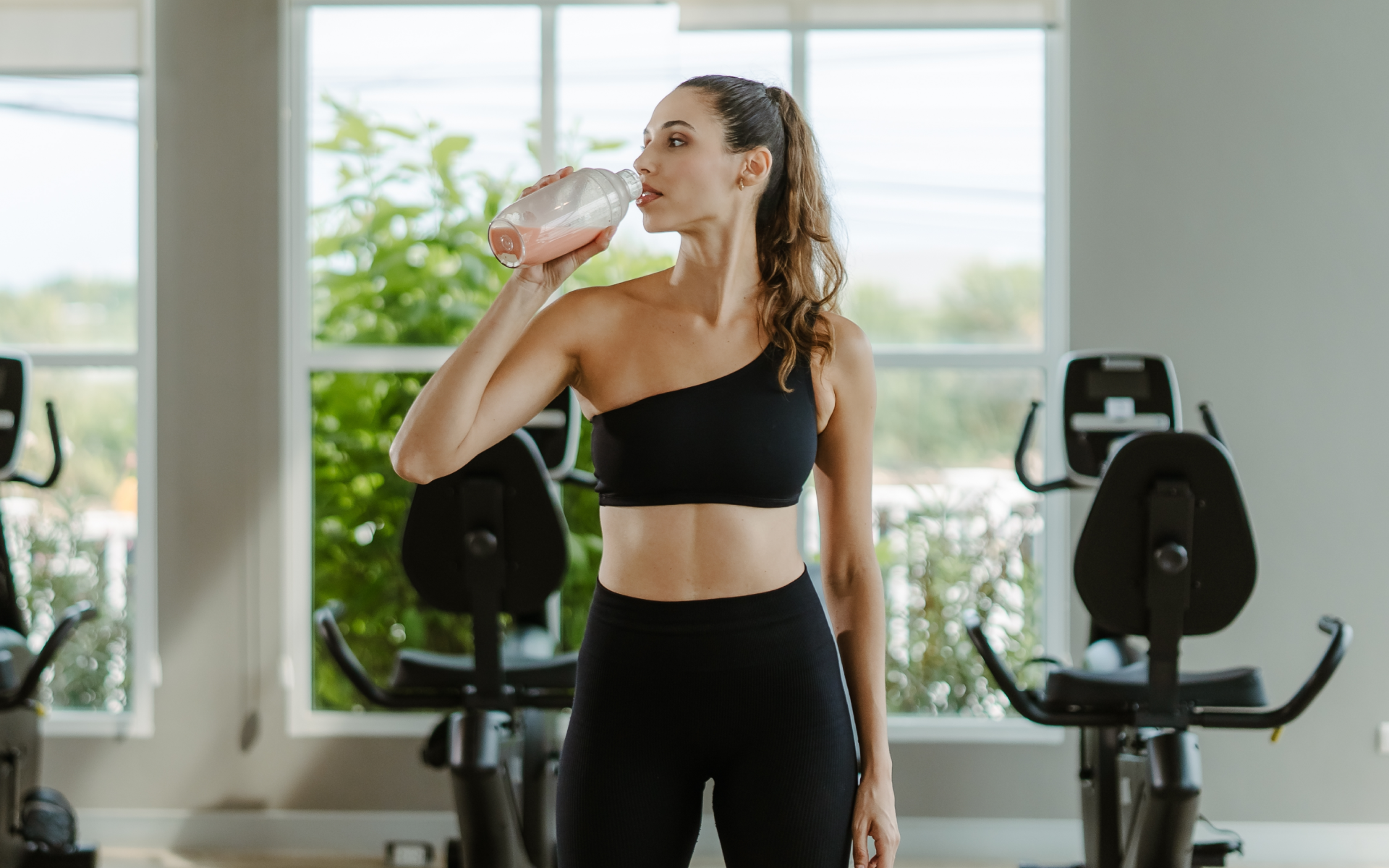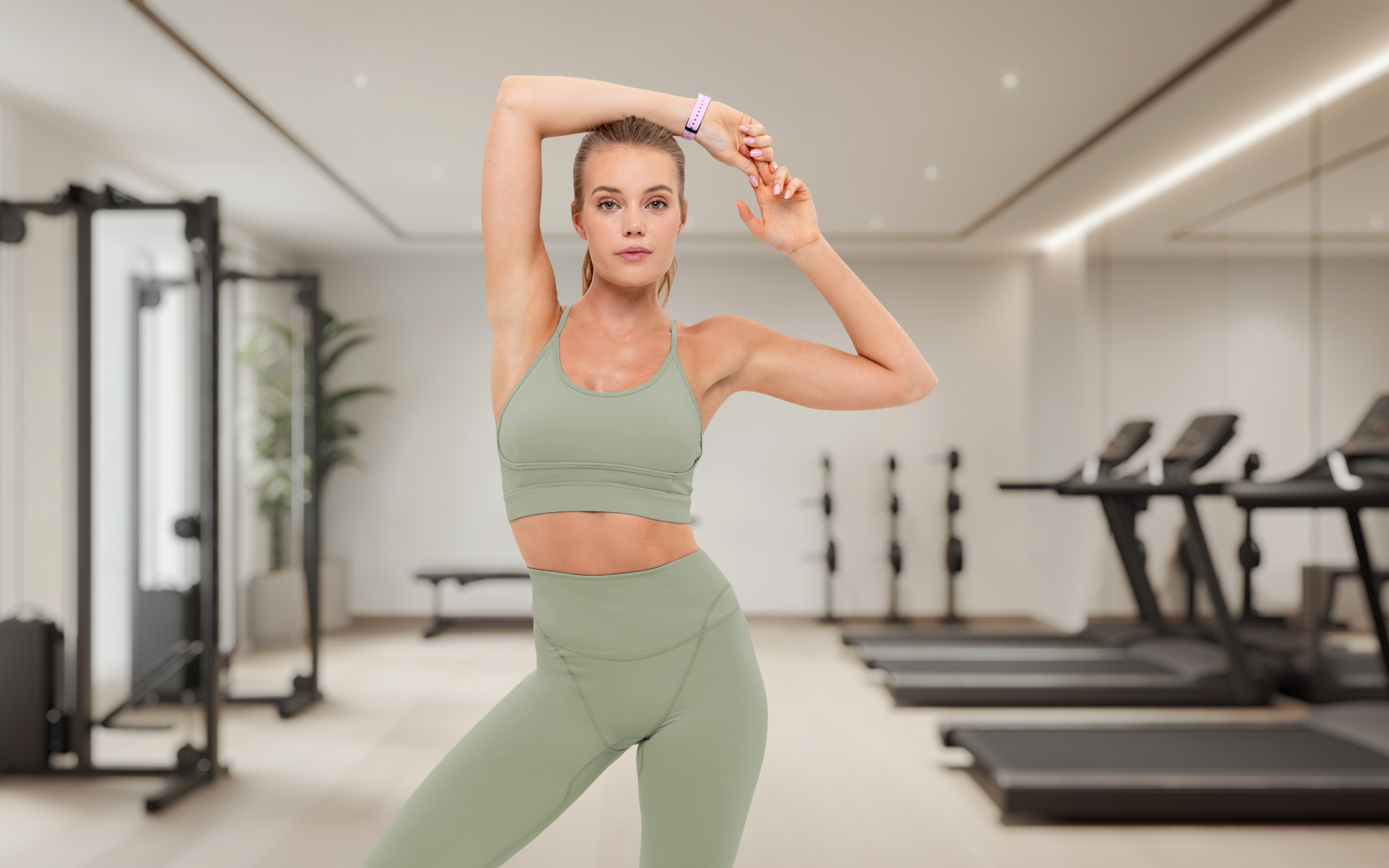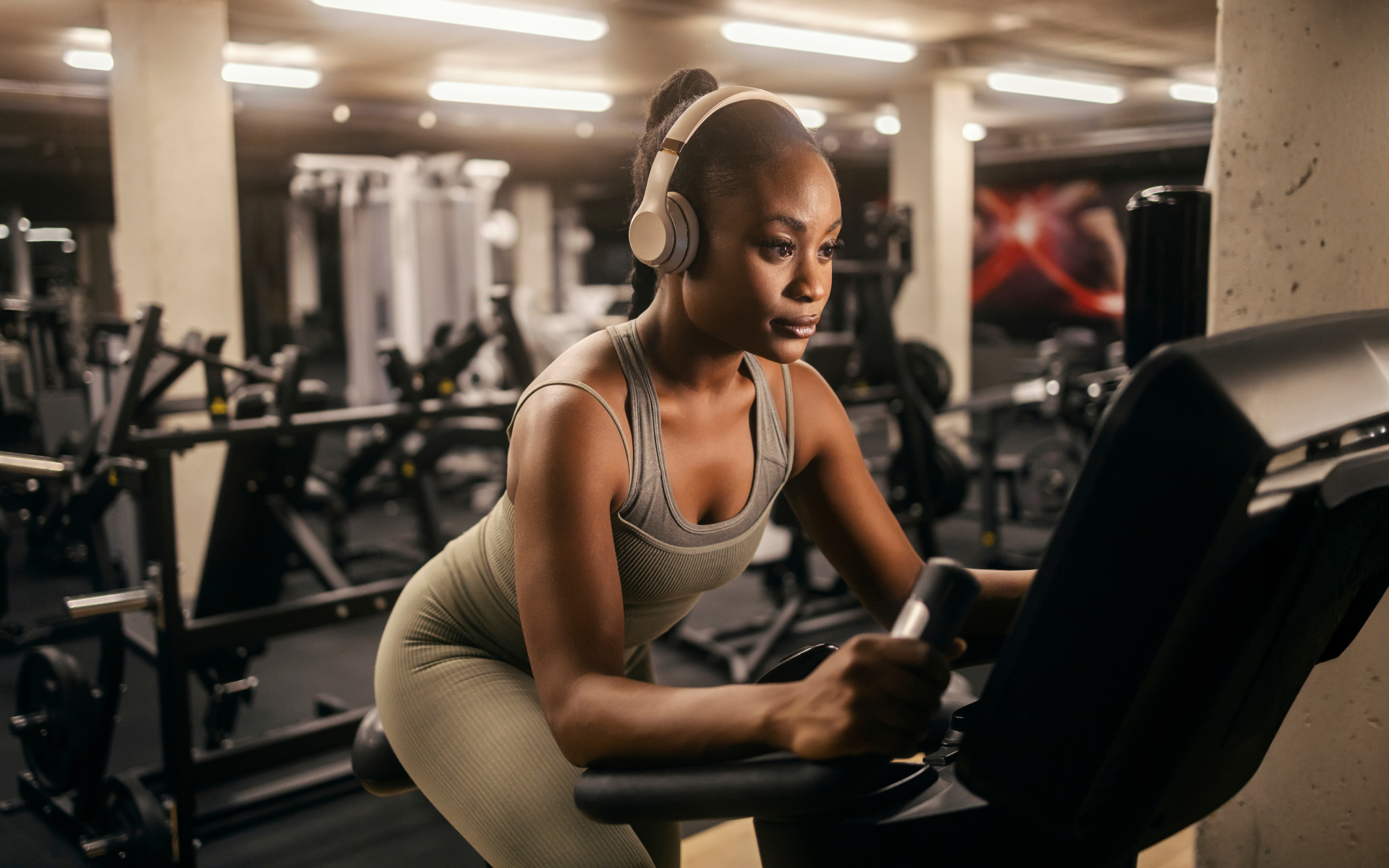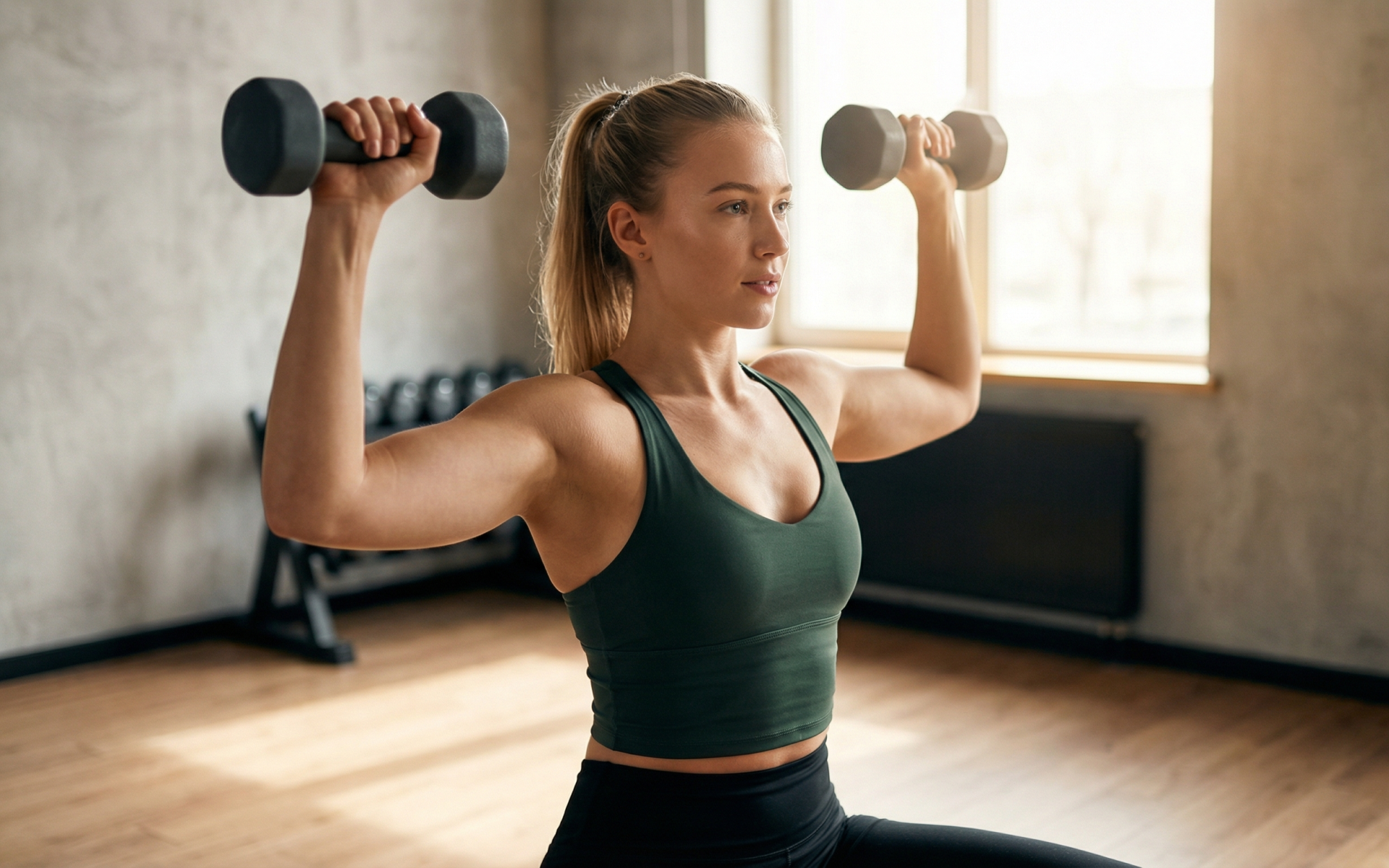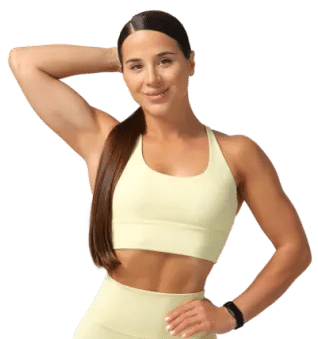Whether you’re aiming to shed excess body fat, strengthen your heart, or simply improve your endurance, cardiovascular exercise is a scientifically proven way to get there.
If you’re new to working out at the gym, it’s normal to feel unsure about where you should start with cardio. Are certain machines better than others? What intensity is right for your goals? And how do you balance fat loss with keeping your heart healthy?
This article breaks down the fundamentals of gym-based cardio training, offering you a step-by-step plan tailored for beginners. By the end, you’ll understand how and why to incorporate cardio into your regimen and you’ll also have the tools to get started with confidence and purpose.
What Form of Cardio Is Most Effective?
Choosing the “most effective” form of cardio depends on several factors, including:
- Your fitness goals
- Fitness level and abilities
- Training preferences
Cardiovascular exercise comes in various forms, each of which offers unique benefits and considerations (1). Here’s a breakdown to help you understand the three main types of cardio and how to decide which is best for you.
Steady-State Cardio
Steady-state cardio involves maintaining a consistent intensity over a set period (2). Think of a long walk, jogging on a treadmill, or a mid-paced session on the elliptical.
Benefits:
- Ideal for building endurance as it trains your aerobic system, which uses oxygen efficiently for energy.
- Low barrier to entry, which makes it suitable for beginners.
Drawbacks:
- It can become monotonous if the intensity or environment doesn’t change.
- Burns fewer calories per minute than higher-intensity options.
Best for: Individuals looking to improve overall cardiovascular endurance, those who are easing into fitness, or anyone who enjoys a relaxed, meditative pace of exercise.
Whether you’re a workout beast or just a beginner making your first foray into the world of fitness and dieting – BetterMe has a lot to offer to both newbies and experts! Install the app and experience the versatility first-hand!
High-Intensity Interval Training (HIIT)
HIIT alternates short bursts of intense effort (e.g. sprinting) with recovery periods (e.g. walking) (3). These workouts can be done on a treadmill, bike, rower, or with bodyweight exercises.
Benefits:
- Burns calories quickly and continues to boost your metabolism for hours afterward (known as the afterburn effect or EPOC – excess post-exercise oxygen consumption) (4).
- Improves both aerobic and anaerobic fitness levels .
- Time-efficient – most sessions are 20-30 minutes.
Drawbacks:
- Not well-suited for beginners as it demands a solid fitness base and proper recovery.
- Higher intensity increases the risk of injury if performed with poor form or inadequate preparation.
Best for: Time-crunched individuals who are looking for efficient calorie burn, or those with moderate to advanced fitness levels who are aiming to improve power and speed.
Low-Impact Cardio (Cycling, Swimming, Rowing)
Low-impact cardio involves exercises that are easier on the joints while still engaging the heart and lungs (5). Examples include cycling, swimming, and rowing.
Benefits:
- Gentle on the body, which makes it excellent for people with joint pain or mobility concerns or during recovery phases.
- Engages multiple muscle groups, particularly swimming and rowing, which promotes total-body strength and cardiovascular fitness.
- Suitable for all ages and fitness levels.
Drawbacks:
- May require specific equipment or access to facilities.
- Calorie burn varies depending on intensity, which can be lower in more relaxed sessions.
Best for: Individuals who are managing joint or mobility issues, anyone who is looking for a sustainable, long-term exercise option, or people who enjoy variety in their workout routine.
How to Choose the Right Form of Cardio
When deciding which form suits you best, you should consider the following:
- Your Goals:
- For fat loss, HIIT can maximize calorie burn in shorter sessions.
- For heart health and stress relief, steady-state or low-impact cardio is often ideal.
- Your Fitness Level:
- Beginners often benefit from steady-state or low-impact options that are easier to sustain.
- Advanced individuals may incorporate HIIT or combine methods for variety.
- Your Preferences:
- If you dread running, don’t run. Do you enjoy cycling? Do more of that. Consistency comes from activities you actually enjoy.
Ultimately, the most effective form of cardio is one that is aligned with your needs and keeps you motivated to show up regularly. Mixing and matching all three forms can also keep your training fresh while addressing various aspects of fitness. The goal isn’t to choose a single “best” style but to build a routine you can stick with long-term.
What Cardio Burns Belly Fat?
The idea that a specific type of cardio can target belly fat is a common misconception. Fat loss doesn’t occur in isolated areas, no matter how much cardio you do. Instead, reducing belly fat comes down to overall fat loss, and the most effective strategy combines regular exercise with a balanced diet (6).
The role of cardio in fat loss lies in creating a calorie deficit by burning energy. High-intensity interval training (HIIT) is particularly efficient as it burns calories during the workout and boosts your metabolism for hours afterward (4).
On the other hand, steady-state cardio, such as jogging or cycling at a consistent pace, is excellent for longer sessions that gradually contribute to fat loss over time (7).
What matters most is consistency. Choose activities you enjoy, whether that’s running, swimming, or brisk walking on the treadmill. Pair your cardio routine with strength training to preserve muscle, as higher muscle mass supports a faster metabolism (8). With patience and a sustainable approach, belly fat reduction will follow as part of overall fat loss.
What Is a Smart Gym Cardio Workout Plan for Fat Burn?
A smart cardio workout plan for fat burning should balance three variables to maximize efficiency while supporting long-term sustainability:
- Intensity
- Duration
- Variety
This approach combines steady-state cardio, high-intensity interval training (HIIT), and low-impact options, ensuring your workouts remain effective, manageable, and enjoyable. Below is a practical, science-backed cardio plan you can follow.
Day 1: Steady-State Cardio (45-60 minutes)
Focus: Build endurance and burn calories.
Example:
- Warm-up (5 minutes): Walk at a brisk pace or a light jog on the treadmill.
- Main session (40-50 minutes): Choose a moderate intensity you can sustain, such as cycling, treadmill jogging, or using the elliptical machine. Maintain a pace where you’re slightly out of breath but can still hold a conversation.
- Cool-down (5 minutes): Slow your pace gradually and gently stretch major muscle groups.
Day 2: High-Intensity Interval Training (20-30 minutes)
Focus: Maximize calorie burn and metabolism boost in a short period.
Example:
- Warm-up (5 minutes): Dynamic movements such as high knees, arm swings, and a light jog.
- Main session (20 minutes):
Alternate between 30 seconds of all-out effort and 90 seconds of active recovery. For example:- Sprint on the treadmill for 30 seconds, then walk briskly for 90 seconds.
- Repeat 8-10 rounds.
- Cool-down (5 minutes): Slowly jog or walk, then stretch to relax tight muscles.
HIIT is highly effective for burning fat and retaining muscle, but it should be limited to 2-3 days a week due to its intensity.
Day 3: Rest or Active Recovery
Focus: Promote recovery and reduce the risk of overtraining.
Take a light walk, do yoga, or focus on mobility exercises. Low-impact activities such as swimming can also boost blood flow and aid recovery (9, 10).
Day 4: Low-Impact Cardio (30-45 minutes)
Focus: Burn calories while minimizing joint stress.
Example:
- Warm-up (5 minutes): A light session on your machine of choice, such as a rowing machine or stationary bike.
- Main session (25-35 minutes):
- Cycle at a steady pace or do intervals such as 1 minute of higher resistance followed by 2 minutes at a moderate effort.
- Alternatively, swim laps at a comfortable pace.
- Cool-down (5 minutes): Gently reduce intensity and relax with stretches.
Low-impact options are ideal if you’re recovering from an intense training session or prefer gentler workouts.
Check out this sample low-impact cardio workout to get you started.
Day 5: High-Intensity Interval Training (20-30 minutes)
Focus: Incorporate variety in your HIIT.
Example:
- Warm-up (5 minutes): Dynamic stretches or light cardio.
- Main session (20 minutes):
- Use equipment such as a rower or a stair climber.
- Go all out for 40 seconds, followed by 90 seconds slow and easy. Complete 7-10 rounds.
- Cool-down (5 minutes): Slow down and stretch to bring your heart rate back to resting levels.
This variation ensures you’re engaging different muscle groups while keeping your metabolism high.
Day 6: Long Steady-State Cardio (60 minutes)
Focus: Burn fat through endurance-based aerobic exercise.
Example:
- Warm-up (5-10 minutes): Start with a light jog or brisk walk.
- Main session (50 minutes): Use your favorite cardio machine or activity, maintaining a consistent, moderate effort.
- Cool-down (5-10 minutes): Walk at a slow pace and stretch post-workout.
Longer cardio sessions help create a calorie deficit while boosting cardiovascular health.
Day 7: Rest or Active Recovery
Use this day for foam rolling, light yoga, or another gentle activity. Allow your muscles and nervous system to recover after a week of effort.
Key Tips for Success:
- Warm-Up and Cool-Down:
- A proper warm-up prepares your muscles and prevents injury, while a cool-down promotes recovery (11).
- Mix and Match:
- Alternate different forms of cardio to prevent boredom and overuse injuries.
- Gradual Progression:
- Start with comfortable durations and intensities, then gradually increase as your fitness improves.
- Fuel and Hydrate:
- Proper nutrition and hydration are essential for supporting your performance and recovery (12).
Our guide Beginner Cardio Workout highlights more simple yet effective exercises that you can incorporate into your routine.
What Is the Most Effective Cardio Machine in the Gym?
The question of which cardio machine is “most effective” is entirely dependent on your personal goals, fitness level, and what you find enjoyable. From treadmills to rowing machines, each piece of equipment has its unique advantages and drawbacks.
Treadmill
Benefits:
- Simulates natural movements such as walking, jogging, and running, which makes it intuitive for most users.
- Adjustable speed and incline settings allow you to tailor intensity levels, supporting everything from steady-state cardio to high-intensity interval training (HIIT).
- Effective for calorie burning, particularly at higher intensities.
Drawbacks:
- High-impact, which may strain joints, particularly for those with knee or hip issues.
- Running on a treadmill doesn’t fully mimic outdoor terrain, which some runners may find limiting.
Ideal for:
- Individuals who are aiming to boost cardiovascular endurance or engage in HIIT.
- Those who prefer walking or running indoors for convenience and safety.
Stationary Bike
Benefits:
- A low-impact option that’s easy on the joints, which makes it perfect for beginners or those who are recovering from injuries.
- Versatility in workout style, including steady-state cycling or intense sprints.
- Great for strengthening the lower body, particularly the quads, hamstrings, and glutes.
Drawbacks:
- Primarily targets the lower body, offering less engagement for the upper body.
- Calorie burn may be lower than other machines unless the intensity is increased significantly.
Ideal for:
- Individuals with joint pain or mobility concerns.
- Cyclists who want conditioning in a controlled environment or anyone who needs a seated, steady cardio option.
Elliptical
Benefits:
- Provides a full-body, low-impact workout by engaging both the upper and lower body through synchronized arm and leg movements.
- Gentle on joints, which makes it suitable for a wide range of fitness levels.
- Adjustable resistance and incline settings offer variety for intensity.
Drawbacks:
- Calorie burn and engagement are heavily dependent on the chosen resistance and effort.
- The motion can feel unnatural to some users, which reduces the appeal for long sessions.
Ideal for:
- Individuals who are aiming for a joint-friendly, full-body workout.
- Beginners who are looking for a versatile, low-impact cardio machine.
Read more: Your First Treadmill Hill Workout: Easy Steps to a Stronger You
Rowing Machine
Benefits:
- Engages the entire body, including the legs, core, back, and arms, which makes it highly efficient for full-body conditioning.
- Low-impact but demands strength and coordination, offering both cardio and muscular endurance benefits.
- Great for improving posture and back strength when used with proper form.
Drawbacks:
- Requires technique – improper form can lead to strain or discomfort, particularly in the lower back.
- Some individuals may find the repetitive motion tiring or difficult to sustain for long durations.
Ideal for:
- Those who are looking for a full-body workout that combines strength and cardio.
- Fitness enthusiasts who are looking for variety or a challenging alternative to traditional machines.
How to Choose the Best Cardio Machine for You
1. Consider Your Goals:
- For high-calorie burn and versatility, opt for the treadmill or rowing machine.
- For a low-impact workout, stationary bikes or ellipticals are best.
2. Evaluate Fitness Level:
- Beginners often benefit from gentle machines such as the bike or elliptical.
- Advanced users may prefer the intensity that is offered by treadmills or rowers for interval training.
3. Factor in Preferences:
- If you enjoy the activity, you’re more likely to stay consistent. For example, runners may prefer treadmills, while those who value full-body engagement gravitate toward rowers.
4. Account for Physical Limitations:
- If you have joint pain or are recovering from an injury, prioritize low-impact options such as stationary bikes or ellipticals.
Ultimately, the most effective cardio machine is the one that is aligned with your fitness objectives, feels good to use, and keeps you motivated. Don’t hesitate to mix and match cardio workout gym machines to prevent boredom and target different muscle groups. Fitness is a long-term endeavor, so prioritize sustainability and enjoyment in your routine.
When Should I Do Cardio in My Gym Routine?
Whether you’re aiming for fat loss, strength gains, or overall fitness, scheduling cardio thoughtfully within your routine is essential for optimizing results. Consider these pros and cons of different timings for your cardio sessions:
Cardio Before Strength Training
Pros:
- Ideal for warming up your body, improving circulation, and preparing your muscles for movement.
- Effective if your primary goal is to enhance cardiovascular endurance or burn calories, as fresh energy levels allow you to push harder during cardio.
Cons:
- Performing cardio first may deplete your glycogen stores, reducing energy for weightlifting or other strength-based activities.
- If your goal is to build muscle or increase strength, you may find your lifts are less effective after intense cardio.
Best for:
- Individuals focused on improving heart health, endurance, or when the cardio session is light to moderate in intensity.
Cardio After Strength Training
Pros:
- Allows you to prioritize strength training, ensuring you lift with full energy and proper form.
- Weightlifting elevates your metabolism, so doing cardio afterward may help you burn more fat during your session.
- Minimizes the risk of fatigue or injury during lifts caused by being overly tired from cardio.
Cons:
- Performing cardio after strength training can be challenging, particularly after an intense lifting session, as your muscles may already feel fatigued.
Best for:
- Those who are focused on building strength or muscle mass while still incorporating cardio for fat-burning or endurance.
On Separate Days
Another effective strategy is to separate your cardio and strength training into different days. This allows you to give your all to each activity without compromising performance or energy.
You can also combine cardio with bodyweight training (a type of strength training that uses your own body weight as resistance). We discuss the bodyweight cardio workout in greater depth in our earlier blog post.
Best For:
- Individuals with flexible schedules who want to maximize both strength and cardiovascular gains.
BetterMe will shake off your mental funk, rid you of your energy-zapping habits, and help you sculpt the body of your dreams. Intrigued? Hurry up and change your life for the better!
Combining Cardio and Flexibility Work
Pairing light to moderate cardio with flexibility work, such as yoga or dynamic stretches, can enhance blood flow and promote recovery. Doing this on active recovery days helps maintain activity without overloading your system.
Balancing Cardio and Recovery
Overtraining is a common risk when cardio, strength training, and other activities are poorly balanced (13). To avoid this:
1. Monitor Intensity:
- High-intensity sessions such as HIIT should be limited to 2-3 times per week, alternating with low-impact, low-intensity days to give your body time to recover.
2. Listen to Your Body:
- If you’re feeling fatigued or experiencing soreness, consider lighter activities such as walking or swimming to stay active without strain.
3. Schedule Rest Days:
- Incorporating at least one full rest day and active recovery days will ensure proper muscle and nervous system recovery.
When total exercise time is similar, high-intensity interval training (HIIT) gets you in shape faster than low-intensity, low-impact options. It improves both aerobic and anaerobic fitness, burns calories efficiently, and boosts metabolism for hours post-exercise (7). However, it should be done 2-3 times a week and balanced with other exercises to prevent overtraining. Sweating itself isn’t directly beneficial for the heart, but the physical activity that causes sweating is. Cardio exercises that elevate your heart rate strengthen the heart and improve blood circulation, which reduces the risk of cardiovascular disease (14). Eat a small, balanced meal or snack 1-2 hours before the gym. Focus on easily digestible carbohydrates for energy (such as a banana or oatmeal) paired with some protein (such as Greek yogurt or a boiled egg) to support muscle recovery. Avoid heavy, high-fat meals immediately before a workout (15). That depends on your goals. If you want to build strength or muscle, you should lift weights first to maximize your energy for resistance training. If improving endurance is your priority, you should run first. Having a dedicated day for running is best, as it is a high-impact activity that can cause muscle soreness and fatigue. However, if you’re short on time, you can alternate between a shorter run and weights in the same session.Frequently Asked Questions
What cardio gets you in shape the fastest?
Is sweating good for your heart?
What should I eat before the gym?
Should I run or lift first?
The Bottom Line
Cardio is an essential part of any fitness routine, offering benefits that extend beyond fat loss to include improved heart health, endurance, and overall well-being. Whether you choose steady-state cardio, HIIT, or low-impact options, the key is to align your workouts with your goals and fitness level while staying consistent. Remember to balance cardio with strength training, proper nutrition, and recovery to achieve sustainable results. With the right approach, your gym cardio workout plan can be a powerful tool for unlocking peak physical and mental performance.
DISCLAIMER:
This article is intended for general informational purposes only and does not serve to address individual circumstances. It is not a substitute for professional advice or help and should not be relied on for making any kind of decision-making. Any action taken as a direct or indirect result of the information in this article is entirely at your own risk and is your sole responsibility.
BetterMe, its content staff, and its medical advisors accept no responsibility for inaccuracies, errors, misstatements, inconsistencies, or omissions and specifically disclaim any liability, loss or risk, personal, professional or otherwise, which may be incurred as a consequence, directly or indirectly, of the use and/or application of any content.
You should always seek the advice of your physician or other qualified health provider with any questions you may have regarding a medical condition or your specific situation. Never disregard professional medical advice or delay seeking it because of BetterMe content. If you suspect or think you may have a medical emergency, call your doctor.
SOURCES:
- Aerobic Exercise: What It Is, Benefits & Examples (2023, my.clevelandclinic.org)
- What is Steady-State Cardio? (n.d., blog.nasm.org)
- Evidence-Based Effects of High-Intensity Interval Training on Exercise Capacity and Health: A Review with Historical Perspective (2021, ncbi.nlm.nih.gov)
- High-Intensity Intermittent Exercise and Fat Loss (2010, ncbi.nlm.nih.gov)
- Low-Impact Aerobic Exercise (2017, spine-health.com)
- Diet or Exercise Interventions vs Combined Behavioral Weight Management Programs: A Systematic Review and Meta-Analysis of Direct Comparisons (2014, ncbi.nlm.nih.gov)
- Comparative effects of high-intensity interval training and moderate-intensity continuous training on weight and metabolic health in college students with obesity (2024, nature.com)
- Preserving Healthy Muscle during Weight Loss (2017, sciencedirect.com)
- How often should you take a rest day? (2023, uclahealth.org)
- Active Recovery: Reduce Fatigue and Enhance Performance (2010, issaonline.com)
- Warm Up, Cool Down | American Heart Association (2024, heart.org)
- Nutrition and athletic performance (2023, medlineplus.gov)
- Overtraining Syndrome as a Complex Systems Phenomenon (2022, frontiersin.org)
- Cardiovascular Effects and Benefits of Exercise (2018, frontiersin.org)
- 5 nutrition tips to maximize workouts (2025, mayoclinichealthsystem.org)
